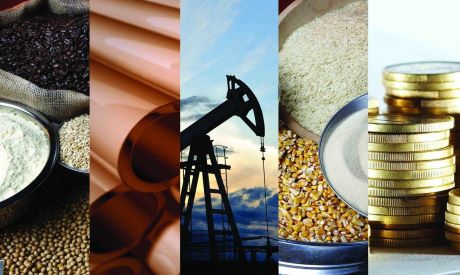European de-industrialisation risks, not volatile gas prices, is the core concern
Global commodities
The surge in European natural gas (TTF) prices thus far in August serves as a reminder of its inherent volatility. Yet, do they also serve as a harbinger of potential elevated winter prices? We believe not. While the advance in gas for delivery in one month may be top of investors’ mind, the winter contracts have not materially budged, treading water within the same range since June – a testament that this recent spike may not markedly impact winter’s trajectory. Granted, uncertainties surrounding the risks of Australian strikes at three major LNG facilities impacting global supply, the vagaries of weather forecasts as well as the complex state of European industrial demand are abundant. Though, with European gas storage levels remarkably robust at 89% full today – above the five year average and a whiskers away from the EU’s end of September target of 90% – the continent remains in a rosy position to navigate the winter heating season ahead. Even across the pond in the US, Henry Hub prices have rallied in sympathy with European TTF, but this has not been driven by fundamentals that remain benign. On net, whilst we do anticipate TTF rising to average EUR62/MWh in Q4 2023 on more normal winter temperatures (unlike the mild winter last year) and marginally lower demand destruction driving higher demand (and lower inventories), our core concern is that the issue is less about gas prices but rather European de-industrialisation risks with the continent having to compete with the unparalleled US Inflation Reduction Act (IRA) (see here and here).
Energy
Oil’s impressive seven-week long rebound may lose some steam in the near term. Whilst Brent has surged ~20% from its June lows on tightening micro fundamentals, with levels now within striking distance of this year’s highs, headwinds are emerging. Front and centre remains China’s lacklustre growth trajectory anchored on supportive but no panacea stimulus (see here). Meanwhile, negotiations continue in an attempt to avert Australian strikes at the LNG facilities of Wheatstone (8 mtpa), Gorgon (16 mtpa) and North West Shelf (16 mtpa). With no actual physical disruptions to the market, TTF has retraced some of its gains from last week, allowing Asian spot (JKM) LNG prices to climb back above European (TTF) prices.
Base metals
Base metals fatigue is worsening. The broad theme continues of a harsh environment this year for the complex as manufacturing recessions in most developed markets alongside disappointing Chinese-led emerging markets has driven aluminium, copper, nickel and zinc to year-to-date declines. Looking ahead, until China stimulus achieves a material improvement in confidence and/or developed markets monetary policy adjusts to an easing cycle, we expect little potential sustained broad base metals near term upside.
Precious metals
With the increasing narrative that real yields may move higher, this may be a bad omen for gold given its inverse correlation with inflation-adjusted yields. Whilst we see dips below USD1,900/oz as a buying opportunity, we would argue for fading upside moves in the USD-denominated gold price until a clear downward trend in yields and the USD emerges. It’s not gold’s time to shine just yet.
Bulk commodities
Although iron ore rallied momentarily after the People’s Bank of China (PBoC) surprised with its MLF cut this week, the move will not move the needle significantly for the bulk commodity, in our view. The persistent troubles in China’s property market pose a threat to iron ore and thus far the myriad, piecemeal Chinese stimulus initiatives and reassuring rhetoric have failed to turn the tide.
Agriculture
Rice’s precipitous rally has more room to run, with benchmark prices having the potential to register the largest monthly gain on record in August as constrained supply meets robust demand. Moreover, El Nino is still building, and its effects have yet to be fully felt. Of note, the WEF’s recent 2023 Global Risk Report ranked a looming food supply crisis as one of the top four threats facing the global economy. On net, food price inflation shocks are back on the menu.
Core indicators
Price performance and forecasts, flows, market positioning, timespreads, futures, inventories, storage and products performance are covered in the report.



